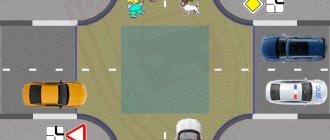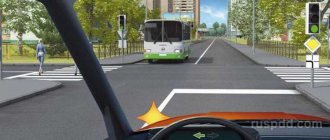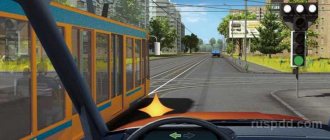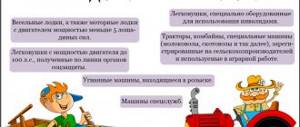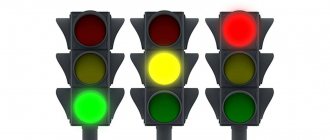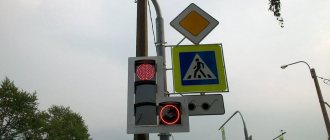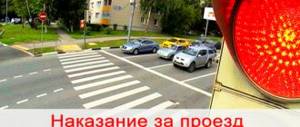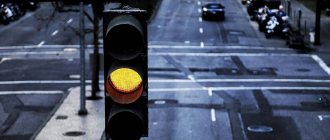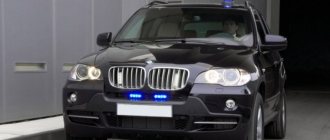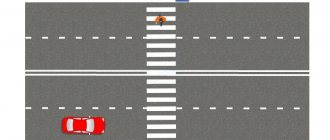When should you not go out on the road?
You cannot go out on the road if there are vehicles of special services moving along it, performing certain work or going to eliminate problems.
A pedestrian at a pedestrian crossing, if there is an appropriate permit sign, has a direct advantage, but they must give way to cars with their signal on.
In this case, it matters what kind of signal the car has on - if it’s just a flashing light without a siren, you don’t have to give way. However, it still doesn’t hurt to be careful.
In any case, a pedestrian on the road, even on a pedestrian, to a certain extent risks his life and his health, so it is better to play it safe and let the car pass so as not to end up in the hospital.
When crossing the road on a marked pedestrian, extreme caution is required. There is no need to throw yourself under the wheels of cars, both specialized and all others.
Every pedestrian should remember that the chances of surviving a collision with a car traveling at 50 km/h are slim.
Video: Traffic rules for pedestrians
Who are pedestrians?
Before moving on to the question of what traffic rules are established for pedestrians, it is worth studying the question of who a pedestrian is.
This is a person who is a participant in traffic, but is outside the vehicle.
It is immediately worth noting that this category includes people who move not only in the usual way, but also in wheelchairs, riding bicycles or mopeds, as well as those who use scooters or other means of transportation.
Workers performing certain work on the highway are not pedestrians; their rules do not apply to them. As soon as an employee stops his work, but remains on the road, he is automatically assigned the status of a pedestrian.
Every person should know how to properly cross the road at a pedestrian crossing and what rules should be followed.
Competent movement along a pedestrian crossing is a guarantee of the safety of every modern person who is a pedestrian.
Responsibilities of pedestrians
When studying the issue related to the rules and responsibilities for pedestrians, first of all, it is worth turning to the standard traffic rules, to their 4th chapter.
Due to the fact that a standard pedestrian, like a driver, is a participant in the movement, his behavior on the roadway is strictly regulated.
Read also: Vc 12 with klm address value 352
Here are the basic rules and responsibilities for modern pedestrians regarding the issue of how to cross the road correctly:
- You can only cross through places specially designated for this purpose. We are talking about ordinary crossings - underground and above ground;
- in the absence of crossings, you need to move along the sidewalk or, if there is none, along the side of the road;
- at controlled intersections you can cross the roadway only at a special sign or traffic controller;
- if there is no zebra crossing on the road, the crossing must be carried out at a right angle to the direction of the route, but not diagonally;
- in all cases, without exception, he is obliged to assess the general road situation and only after ensuring that it is completely safe and has excellent guaranteed visibility, all passing drivers can continue driving;
- crossing the road not following the markings is allowed only if the road is very clearly visible, that is, the view is not blocked by nearby special equipment, parked cars, or any buildings;
- crossing the roadway is permissible only after an adequate assessment of the distance between a person and nearby vehicles;
- You cannot create various obstacles for other participants moving along the road; it is strictly forbidden to provoke various emergency situations by your actions;
- When crossing the road, you do not need to stop without good reason. Quite often on the highway you can meet indecisive people who, with their movements or attempts, do not show their clear intention, misleading drivers. Such behavior is unacceptable, as it misleads drivers and quite often becomes the cause of an emergency;
- when crossing the road at night outside the city limits, the pedestrian must wear special reflective elements;
- Separate conditions are provided for pedestrians to stop traffic. For the most part, this applies to situations involving the approach of vehicles equipped with special signal signs. If a person sees such a vehicle while already on the road, he must immediately return to the sidewalk.
Based on everything said above, we can conclude that there are quite a lot of rules and responsibilities for pedestrians . However, the average person is little familiar with them.
It is for this reason that each of them is worth considering in more detail. This is also important for the reason that knowledge of the rules is guaranteed to help avoid mistakes that could lead to fines and, more scary, various injuries.
Fines for pedestrians at crossings
Fines for pedestrians are given in Articles 12.29 and 12.30 of the Code of Administrative Offenses:
| Violation | Punishment |
| Violation of rules by a pedestrian | warning or 500 rubles |
| Violation of rules resulting in obstruction of traffic or harm to health | 1,000 rubles |
Thus, both for crossing a red light and for jaywalking, a pedestrian can be punished with only a small fine. —>
Signalized intersection and signalized crossing
Let's turn to clause 4.4 of the traffic rules:
4.4. In places where traffic is regulated, pedestrians must be guided by the signals of a traffic controller or a pedestrian traffic light, and in its absence, a transport traffic light.
A pedestrian crossing or intersection is controlled only if the traffic is regulated by a traffic controller (police officer) or a working traffic light.
Please note that if the yellow signal is constantly flashing at the traffic light, then such an intersection is uncontrolled.
Traffic controller signals for pedestrians
The traffic controller automatically turns any intersection into a regulated one. If there is a traffic controller at the intersection, then you need to be guided by his gestures, and not by the traffic lights!
The rules provide for 3 possible traffic controller gestures:
| Gesture | Pedestrian implications |
| right hand raised above head | No Pedestrians |
| right arm extended forward | Pedestrian movement is permitted from behind the traffic controller |
| arms extended in different directions in the shape of the letter T | Pedestrian movement is permitted from the chest and from the back of the traffic controller |
Let's look at a few examples.
In the figure, the right hand of the traffic controller is extended forward, therefore pedestrians can only cross the road from the side of the policeman’s back.
Please note that this gesture allows the red car to turn right, i.e. the trajectories of the pedestrian and the car intersect. In this case, the car must give way (clause 13.1 of the Rules). However, the pedestrian should be careful, because... the driver may not know the rules or simply not notice the pedestrian.
In the figure, the traffic controller’s arms are extended to the sides, i.e. Pedestrians are allowed to move from both the chest and the back.
At the same time, both orange and blue cars have the right to turn right, giving way to pedestrians. So be careful.
Since many pedestrians do not know the traffic controller’s gestures, police officers in practice can use additional gestures. For example, they allow pedestrians to move by simply waving their hand in the right direction.
Read also: Kia Sorento remove headlight
At what traffic light can you cross the road?
A traffic light at an intersection makes the intersection controllable only if it operates in the red-amber-green mode (and not in the flashing yellow signal mode).
A special pedestrian traffic light , on which there are images of little men, allows the movement of pedestrians if the traffic light is green, and prohibits it if the traffic light is red. Crossing a red light is a violation of traffic rules, for which a pedestrian may be subject to an administrative fine.
If at an intersection there is only a car traffic light and no pedestrian traffic light, then you need to be guided by the signals of the car traffic light. But how to be guided is not specified in the rules.
Therefore, everything is left to the discretion of the pedestrian. Some pedestrians cross the road when the signal in the right direction is green, while others cross when the signal for all cars is red. In general, the situation is controversial, so be careful. Fortunately, there are fewer and fewer such intersections over time.
